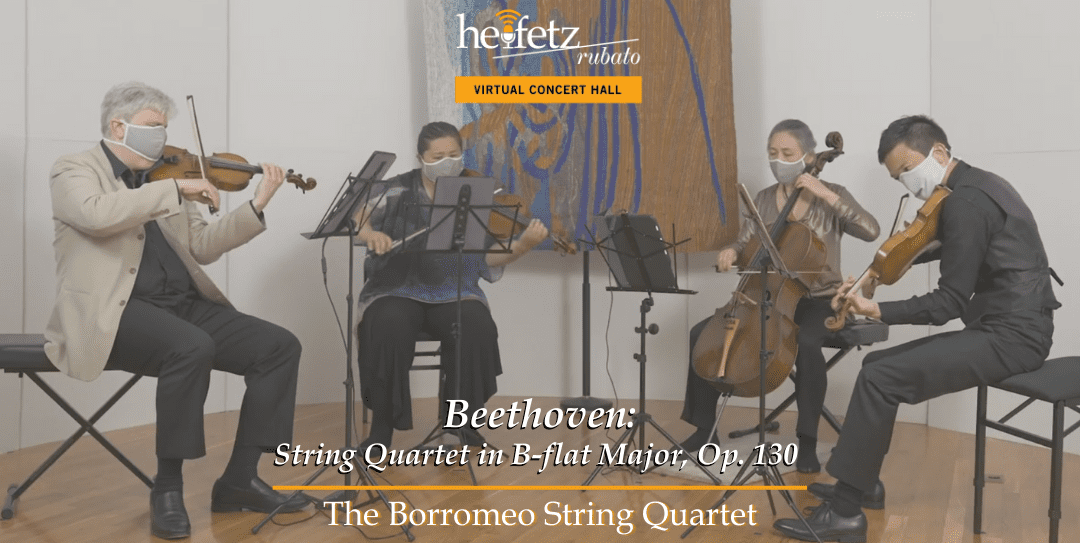The tune itself will likely stick in your head after a few hearings, and you can expect it to haunt you afterward.
– Victor Lederer, Beethoven’s Chamber Music: A Listener’s Guide
Our latest Video of the Week features one of the most extraordinary movements in all of Beethoven’s string quartets, drawn from our most recent Beethoven Experience with the Borromeo Quartet program, which was devoted to the monumental String Quartet No. 13 in B-flat, Op. 130. (The Beethoven Experience is the Heifetz Institute’s oyear-long survey of all 16 of Beethoven’s totemic string quartets in observation of the composer’s 250th birth anniversary. Click here to view the past programs and to see what’s coming up.)
Movement number five of the six-movement Op. 130 quartet is titled Cavatina, a word borrowed from the world of opera. Only this song isn’t a pyrotechnical vocal aria as it is a deeply-felt hymn. Beethoven himself wrote that writing this movement “cost him tears” – to the extent that some even claim that Beethoven’s dripping tears even stained the original manuscript.

The Golden Record, containing “Earth’s Greatest Hits,” including Beethoven’s Cavatina, now hurtling through the cosmos aboard Voyager I.


Beethoven writes “beklemmt”- roughly translated as “oppressed, anguished, stifled.” (highlighted in yellow) at the start of the extraordinary Cavatina movement from his Op. 130 string quartet.
Whether that’s true or not, what’s indisputable is that Beethoven’s teary inspiration is now hurtling through the cosmos as part of the Golden Record, a 90-minute recording representing some of mankind’s finest achievements, and blasted into space aboard the Voyager 1 spacecraft in 1977 at the behest of astronomer Carl Sagan. Sagan says, “the spacecraft will be encountered and the record played only if there are advanced space-faring civilizations in interstellar space (aliens who find it).” Voyager 1 – and its Beethovenian cargo – has now entered what is known as interstellar space, traveling, in Dr. Sagan’s words, “further than anyone, or anything, in history.” If Beethoven only knew he was shedding tears of gold!


